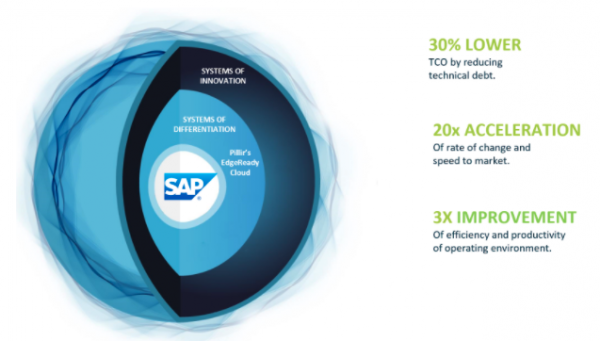
—
Pillir released a blog post on its website detailing how to assess SAP low-code/no-code solutions. SAP revealed in early 2021 that it had purchased the no-code platform AppGyver, according to a blog post that was published at the time. The question that has been asked by Pillir users and companies considering low-code/no-code platforms for their operations ever since the news broke is, “What’s the difference between AppGyver and Pillir?”
Both Appgyver and Pillir are low-code/no-code application development tools, which is one of the most notable aspects of their respective approaches to app creation. They employ graphical user interfaces to speed up application operations—developers drag and drop rather than writing lines of code—to achieve this speed. Additionally, both systems are citizen-developer-friendly, allowing users with little-to-no training or expertise in software programming to build applications on either platform.
Although there are some parallels between the two platforms, there are also significant differences between them, and examining how they were developed is a good way to understand them.
Appgyver: The goal of Appgyver is to simply make the process of developing applications more convenient for users. The fundamental purpose of the platform is to make it possible for anyone to construct business apps without having to spend countless hours manually programming them.
Pillir: While the platform facilitates the development of new apps, Pillir’s creators had a different purpose in mind: to assist SAP customers in reducing technical debt and maintaining the integrity of existing enterprise resource planning (ERP) systems. Using Pillir, companies can swiftly construct new SAP-optimized applications using visual development, as well as transform existing code into low-code objects. Pillir also has the distinction of being the world’s first SAP low-code/no-code platform built on the SAP React framework.
Another important aspect to note is the method used to ABAP modernisation. The fact that Pillir was created expressly for Advanced Business Application Programming (ABAP) modernisation eliminates the need for any meaningful comparisons here. In order to help organisations migrate their systems to SAP S/4 HANA, other cloud platforms, or an upgraded on-premises system, Pillir offers a diagnostics tool that enables you to view your company’s technical debt and assess the cost of sustaining it. Furthermore, it can automatically convert existing ABAP custom objects into current cloud-based mobile apps.
Finally, since Pillir is based on consumption-based pricing, users may use (and pay for) it only when they need it, and organisations can think of it as a supplement to other development tools that they already use. Users can find out more about the advantages it may give to development teams and companies as a whole by taking a look at the free demo. Please see the following URL for further information: https://www.pillir.io/
Contact Info:
Name: Tyler Young
Email: Send Email
Organization: Pillir
Address: 3133 West Frye Road, Chandler, Arizona 85226, United States
Phone: +1-855-277-7373
Website: https://www.pillir.io
Source: PressCable
Release ID: 89075374
If you detect any issues, problems, or errors in this press release content, kindly contact error@releasecontact.com to notify us. We will respond and rectify the situation in the next 8 hours.






